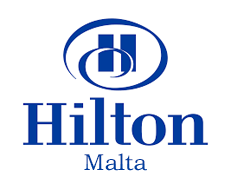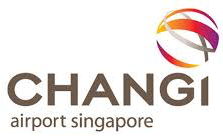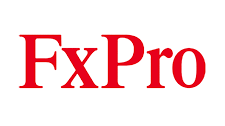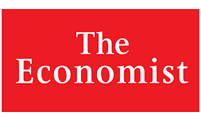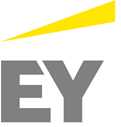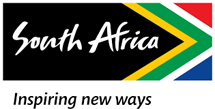Report: The Future of Healthcare
Sector: Healthcare
Publication Date: 2020
Alan Knox, Group CEO at Primex Pharmaceuticals
Primex Pharmaceuticals is spearheading a new lean pharmaceutical business model with big plans to expand in paediatrics and orphan pharmaceuticals. Primex’ CEO, Alan Knox, says there’s a huge demand for low-dose but effective anaesthesia products that is currently unmet.
Could you please start by introducing Primex Pharmaceuticals?
Primex Pharmaceuticals is a Swiss commercial entity intent on becoming a leading international force in innovative anaesthesia. Essentially we acquire niche assets in the hospital arena and set about commercialising them globally. Fairly early on in our life cycle, we acquired Recofol – the first propofol after the originator – from Bayer, which has served as the cornerstone of our business in terms of revenue generation and enabled us to gain a foothold across emerging markets. From there, we were then able to secure our flagship paediatric sedative, OZALIN®, which has proved to be a real game changer and has unlocked a space where there remains considerable unmet needs to respond to.
We understand that there is a surprising paucity of options for anaesthesia when it comes to treating children. What is the issue exactly?
One of the major challenges facing paediatric anaesthetists in treating children, either for premedication prior to surgery or during procedural sedation, has been the absence of acceptable approved medications. While there is a huge industry effort underway focused on adults, very little has materially been done to date to develop indications or formulations licensed specifically for minors. Instead much of the medication that is deployed is classified is ‘off-label,’ which means they are not licensed or approved for the specific use of children as they have been for adults.
The result has been that many children have had to forgo sedation altogether or instead undergo a general anaesthesia. One of our big goals as a company has been to deliver up to the marketplace a safe and effective procedural sedation service. I’m proud to be able to say that OZALIN®, as a novel paediatric sedative for children older than six months, goes a long way towards responding to that gap.
How do you account for the historic lack of innovation in an area so absolutely fundamental to healthcare as anaesthesia?
From a purely commercial standpoint, there simply hasn’t been sufficient volume or value to sustain the interest of Big Pharma. For the really big multinational drug makers, paediatric patients only really become of interest at the end of a product life cycle, almost as an afterthought, with the prospect of winning an extension to patent protection. This is what very much distinguishes a mid-cap specialty player like us because we are willing to target such niches and render them our core business.
The other barrier to entry, until recently, has been regulatory and is related to the difficulties in securing the requisite numbers of child patients required to satisfy the clinical trials requirements. Regulatory authorities around the world, however, have become more accessible and supportive.
Where do you identify the outstanding unmet needs in anaesthesia right now?
Firstly, as I have already alluded to, practitioners would love to have a much broader set of products at their disposal across sedation, analgesia and muscle relaxants that are licensed specifically for children. Secondly, in view of the current opioid crisis in the United States, there is growing demand for more effective analgesics at lower dosage, and regulators and authorities are calling on drug makers to do more investigatory work around the issue of identifying lowest effective dosage.
Moreover, as the way that healthcare is administered undergoes paradigm shifts, notably with the decentralisation of treatment delivery, the role of anaesthetics is going to become more prominent. Patients are increasingly being treated in walk-in clinics or satellite procedural areas such as MRI, diagnostics CT or endoscopy suites as opposed to in the operating theatres of hospitals. In these environments, sedation becomes especially important, not just for children who are experiencing the phobias and fears of going through a procedure that they do not entirely understand, but also for the elderly. In all of these instances, practitioners are crying out for the availability of appropriate low-dosage, yet effective analgesics as part of their toolkit.
So a better anaesthesia offering underpins efforts to introduce a smarter, more sustainable healthcare that manages to achieve more with fewer resources?
Precisely. There has been a clear shift, during the last decade in the US and past five years in Europe, towards procedures being carried out ‘ambulatory-style’ in outpatient clinic settings rather than utilising expensive operating theatre time. This has gone hand-in-hand with a tilt towards preventative care and the advanced deployment of diagnostics to catch disease at an earlier, more easily treatable stage. With the advent of computed tomography (CT) and magnetic resonance imaging (MRI) scanners, the opportunity has opened up to really understand what is going on with the patient and to minimise invasive surgical procedures. This, in turn, is ramping up the need for better sedation and a more comprehensive suite of options for procedural care. The onus is thus on companies like Primex to assist clinicians in finding contemporary solutions fit-for-purpose for modern day procedures.
What steps are you taking to round out and further build up your portfolio?
Our aim is to cover what’s called the triad of anaesthesia, which encompasses products for amnesia in the sense of putting you to sleep; products of analgesia that provide pain relief during the procedure; as well as muscles relaxation & reversal agents.
Now that the foundation stones of our business are firmly in place – namely with our propofol anaesthetic and paediatric sedative – we are looking to work with predominantly R&D developers that demonstrate prowess in identifying need and developing new formulations, but are perhaps missing the commercial acumen to bring them efficiently to market. We are very much on the lookout for developments that are not purely generic, but rather comprise repurposed reformulations and incremental innovations that can make a big difference to particular cohorts or groups of patients in terms of their treatment experience.
Where do you identify Primex Pharmaceuticals’ competitive edge?
We operate a very lean, flexible and versatile business model because the heavy R&D and manufacturing are performed externally. Utilising the services of partners such as contract development and manufacturing organisations (CDMOs) in Italy and France, we have been able to de-risk a significant part of our activities and become highly agile in responding to any changes occurring across the industry. Establishing a network of indigenous partners in specific markets has also been fundamental to our geographic expansion strategies in enabling us to maintain an approach that is ‘glocal’ – simultaneously global and local. Moreover, as a young and nimble company, we have been able to successfully implement a strategy that focuses on quickly changing the pharmaceutical landscape based on interactions with the clinicians.
Big pharma can often seem rather disconnected from the markets they are trying to dominate because, at that corporate level, you are so far away from the end customer that it often becomes difficult to gain a proper understanding of the realities on the ground and the true essence of the marketplace. We at Primex, by contrast, talk directly to the clinicians, the wholesalers and the patients; so we are able to get a much more profound handle and understanding of each specific market. That is why the big multinationals are increasingly reverting to an autonomous business-units style structure.
Who do you perceive to be your main competitors?
Much of what we do is ultimately inspired from the grassroots up. OZALIN®, for instance, was developed by an anaesthetist and pharmacist who thought there had to be a better way of administering this drug to children. Our real competition is thus not really from Big Pharma, but from smaller entities like R&D companies that might one day decide to go it alone and try and commercialise their discoveries in-house. In that sense, we always have to be sensitive to the possibility of our partners of today becoming our competitors of tomorrow.
What do you perceive to be the emerging trends within the pharma industry right now? And where does Primex Pharmaceuticals fit within this mix?
The pharma industry has been undergoing some fascinating changes over the past decade. It is often not appreciated just how thoroughly dynamic our sector is. If you think back to the 1970s, the top 10 drugs were products like beta-blockers whereas now they tend to be oncology therapies that seek to harness a patient’s own immune system. Unlike retail brands like Coca Cola that achieve quasi-permanent resonance, in pharma the science moves on and brands can aspire to a maximum of 20 years dominance. This rapid turnover and flux means that there are always great unfolding opportunities for smaller outfits like Primex to seize upon.
Business models have meanwhile gone full circle. It wasn’t all that long ago when companies were trying to amass scale and gain a simultaneous toehold across multiple therapeutic areas with some innovator companies even bolting on generic capabilities. More recently, though, we have witnessed a reversion to specialism with companies demerging, spinning off non-core businesses, engaging in asset swaps and doubling down upon what they consider to be their key strengths. As a pure play outfit in anaesthesia, our business model aligns with this trend.
What are your immediate priorities looking ahead for developing the business?
My main priority is to complete the process of bringing OZALIN® to market in Europe now that we’ve developed a regulatory pathway to get the product approved and have started executing launches in waves across the continent. The next step will clearly be taking the product to the United States and submitting our dossier to the FDA. We’ve now reached a stage where it’s no longer a question of ‘if’, but ‘how.’ Given that this constitutes a reformulated product where the efficacy and profile is well established and which demonstrably satisfies an urgent unmet need, the American regulator has been giving us very encouraging signs. We simply need to set about completing their checklist.
Do you have any concluding remarks for our international readers?
I think there is a tendency on the part of commentators, analysts and the media to place disproportionate focus on the top ten or twenty pharma MNCs, while overlooking game-changing innovations being discovered and brought to market by German, French, Swiss and Italian mid-caps. To my mind, these are the unsung heroes introducing incremental innovations that really improve upon the patient experience and change lives for the better. This is precisely the sort of mission that Primex has dedicated itself to: redefining what is possible and enacting smart improvements that wield big impacts.

 Related Content
Related Content
The Advent of Value-Based Care Models
Medtronic is committed to working with the health community to better leverage technologies and services that improve patient outcomes, integrate care delivery and support the global shift toward value-based healthcare, says Rob ten Hoedt, Medtronic’s Executive Vice President.
Going Digital: Advancing the Future of Health
GE Healthcare has developed NASA-style command centres for hospitals allowing them to monitor critical data in real time to ensure efficient patient care. Kieran Murphy, Global CEO of GE Healthcare, talks about the benefits of artificial intelligence while sharing his vision of the digital healthcare transformation.
Drone Delivery Solves Last Mile Medical Challenge
Zipline, a drone operator specialising in delivery of medical supplies
Addressing the Global Antibiotics Crisis
The global burden of infections resistant to existing antimicrobial medicines is growing at an alarming pace while major pharmaceutical companies are backing away from developing new antibiotics. We spoke with Marc Lemonnier of Antabio, one of only a handful of private firms dedicated to new antibiotics R&D.
Report Sponsors



